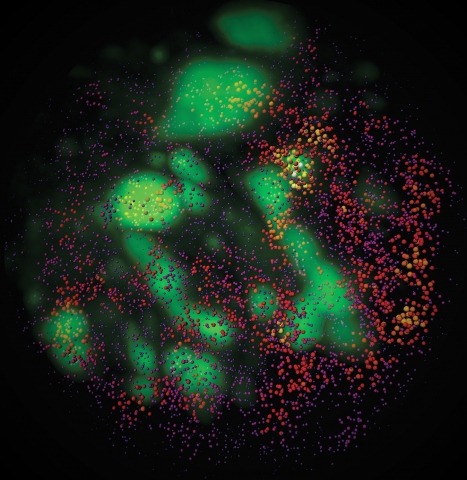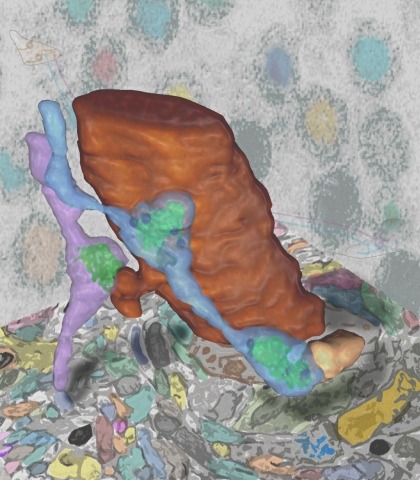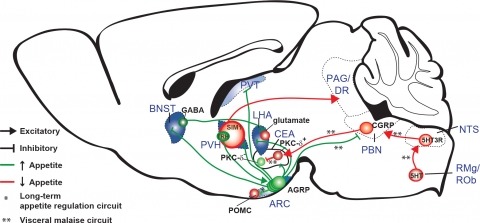Filter
Associated Lab
- Ahrens Lab (1) Apply Ahrens Lab filter
- Aso Lab (2) Apply Aso Lab filter
- Baker Lab (1) Apply Baker Lab filter
- Betzig Lab (2) Apply Betzig Lab filter
- Branson Lab (1) Apply Branson Lab filter
- Cui Lab (1) Apply Cui Lab filter
- Freeman Lab (1) Apply Freeman Lab filter
- Harris Lab (1) Apply Harris Lab filter
- Heberlein Lab (1) Apply Heberlein Lab filter
- Keller Lab (1) Apply Keller Lab filter
- Lavis Lab (2) Apply Lavis Lab filter
- Leonardo Lab (2) Apply Leonardo Lab filter
- Liu (Zhe) Lab (1) Apply Liu (Zhe) Lab filter
- Looger Lab (1) Apply Looger Lab filter
- Riddiford Lab (1) Apply Riddiford Lab filter
- Rubin Lab (2) Apply Rubin Lab filter
- Scheffer Lab (1) Apply Scheffer Lab filter
- Singer Lab (1) Apply Singer Lab filter
- Spruston Lab (1) Apply Spruston Lab filter
- Stern Lab (3) Apply Stern Lab filter
- Sternson Lab (3) Apply Sternson Lab filter
- Tjian Lab (1) Apply Tjian Lab filter
Associated Project Team
Associated Support Team
Publication Date
- December 30, 2014 (1) Apply December 30, 2014 filter
- December 28, 2014 (1) Apply December 28, 2014 filter
- December 24, 2014 (1) Apply December 24, 2014 filter
- December 23, 2014 (4) Apply December 23, 2014 filter
- December 22, 2014 (6) Apply December 22, 2014 filter
- December 13, 2014 (2) Apply December 13, 2014 filter
- December 12, 2014 (3) Apply December 12, 2014 filter
- December 11, 2014 (1) Apply December 11, 2014 filter
- December 10, 2014 (2) Apply December 10, 2014 filter
- December 6, 2014 (1) Apply December 6, 2014 filter
- December 4, 2014 (4) Apply December 4, 2014 filter
- December 3, 2014 (1) Apply December 3, 2014 filter
- December 1, 2014 (4) Apply December 1, 2014 filter
- Remove December 2014 filter December 2014
- Remove 2014 filter 2014
31 Janelia Publications
Showing 1-10 of 31 resultsCombinatorial cis-regulatory networks encoded in animal genomes represent the foundational gene expression mechanism for directing cell-fate commitment and maintenance of cell identity by transcription factors (TFs). However, the 3D spatial organization of cis-elements and how such sub-nuclear structures influence TF activity remain poorly understood. Here, we combine lattice light-sheet imaging, single-molecule tracking, numerical simulations, and ChIP-exo mapping to localize and functionally probe Sox2 enhancer-organization in living embryonic stem cells. Sox2 enhancers form 3D-clusters that are segregated from heterochromatin but overlap with a subset of Pol II enriched regions. Sox2 searches for specific binding targets via a 3D-diffusion dominant mode when shuttling long-distances between clusters while chromatin-bound states predominate within individual clusters. Thus, enhancer clustering may reduce global search efficiency but enables rapid local fine-tuning of TF search parameters. Our results suggest an integrated model linking cis-element 3D spatial distribution to local-versus-global target search modalities essential for regulating eukaryotic gene transcription.
Synaptic connectivity and molecular composition provide a blueprint for information processing in neural circuits. Detailed structural analysis of neural circuits requires nanometer resolution, which can be obtained with serial-section electron microscopy. However, this technique remains challenging for reconstructing molecularly defined synapses. We used a genetically encoded synaptic marker for electron microscopy (GESEM) based on intra-vesicular generation of electron-dense labeling in axonal boutons. This approach allowed the identification of synapses from Cre recombinase-expressing or GAL4-expressing neurons in the mouse and fly with excellent preservation of ultrastructure. We applied this tool to visualize long-range connectivity of AGRP and POMC neurons in the mouse, two molecularly defined hypothalamic populations that are important for feeding behavior. Combining selective ultrastructural reconstruction of neuropil with functional and viral circuit mapping, we characterized some basic features of circuit organization for axon projections of these cell types. Our findings demonstrate that GESEM labeling enables long-range connectomics with molecularly defined cell types.
New tools for mapping and manipulating molecularly defined neural circuits have improved understanding of how the central nervous system regulates appetite. Studies focused on AGRP neurons, a starvation-sensitive hypothalamic population, have identified multiple circuit elements that can elicit or suppress feeding behavior. Distinct axon projections of this neuron population point to different circuits that regulate long-term appetite, short-term feeding, or visceral malaise-mediated anorexia. Here, we review recent studies examining these neural circuits that control food intake. © 2014 S. Karger AG, Basel.
The way the hippocampus processes information and encodes memories in the form of "cell assemblies" is likely determined in part by how its circuits are wired up during development. In this issue, Xu et al. now provide new insight into how neurons arising from a single common precursor migrate to their final destination and form functionally synchronous ensembles.
Muscular hydrostats (such as mollusks), and fluid-filled animals (such as annelids), can exploit their constant-volume tissues to transfer forces and displacements in predictable ways, much as articulated animals use hinges and levers. Although larval insects contain pressurized fluids, they also have internal air tubes that are compressible and, as a result, they have more uncontrolled degrees of freedom. Therefore, the mechanisms by which larval insects control their movements are expected to reveal useful strategies for designing soft biomimetic robots. Using caterpillars as a tractable model system, it is now possible to identify the biomechanical and neural strategies for controlling movements in such highly deformable animals. For example, the tobacco hornworm, Manduca sexta, can stiffen its body by increasing muscular tension (and therefore body pressure) but the internal cavity (hemocoel) is not iso-barometric, nor is pressure used to directly control the movements of its limbs. Instead, fluid and tissues flow within the hemocoel and the body is soft and flexible to conform to the substrate. Even the gut contributes to the biomechanics of locomotion; it is decoupled from the movements of the body wall and slides forward within the body cavity at the start of each step. During crawling the body is kept in tension for part of the stride and compressive forces are exerted on the substrate along the axis of the caterpillar, thereby using the environment as a skeleton. The timing of muscular activity suggests that crawling is coordinated by proleg-retractor motoneurons and that the large segmental muscles produce anterograde waves of lifting that do not require precise timing. This strategy produces a robust form of locomotion in which the kinematics changes little with orientation. In different species of caterpillar, the presence of prolegs on particular body segments is related to alternative kinematics such as "inching." This suggests a mechanism for the evolution of different gaits through changes in the usage of prolegs, rather than, through extensive alterations in the motor program controlling the body wall. Some of these findings are being used to design and test novel control-strategies for highly deformable robots. These "softworm" devices are providing new insights into the challenges faced by any soft animal navigating in a terrestrial environment.
The hemoglobinopathies, such as β-thalassemia and sickle cell anemia (SCA), are characterized by mutations of the β-globin gene resulting in either decreased or functionally abnormal hemoglobin (Hb) production. As bone marrow transplant is the only curative option for these patients, there is a strong need for new therapeutic approaches. Both β-thalassemia and SCA represent ideal targets for gene therapy since introduction of a normal β-globin gene can ameliorate the phenotype, as we and others have shown previously. Overcoming the developmental silencing of the fetal γ-globin gene represents an additional approach for the treatment of hemoglobinopathies. Here, we directly compare a recently established approach to activate the γ-globin gene using forced chromatin looping with pharmacologic approaches to raise γ-globin expression. The β-type globin genes are activated through dynamic interactions with a distal upstream enhancer, the locus control region (LCR). The LCR physically contacts the developmental stage appropriate globin gene via chromatin looping, a process partially dependent on the protein Ldb1. Previously, we have shown that tethering Ldb1 to the murine β-globin promoter with a custom designed zinc finger protein (ZF-Ldb1) can induce loop formation and β-globin transcription in an erythroid cell line (Deng et al., 2012). Further work showed that forced chromatin looping can be exploited to potently reactivate fetal globin gene expression in adult human erythroid cells (Deng et al., 2014). Here we compared the efficacy and toxicity of ZF-Ldb1 to pharmacologic compounds that induce HbF in cultured hematopoietic stem progenitor cell-derived erythroid cultures from normal and SCA donors. ZF-Ldb1 increased HbF synthesis in SCA erythroid cells (N=8) up to 86% and, concurrently, reduced sickle Hb (HbS) below 15%, consistent with previous studies of erythroid cells from normal probands. Preliminary results obtained from treating SCA specimens (N=3) show that the induction of HbF in cells treated with ZF-Ldb1 is twice as high (+35.55% ± 8.34%, at a dose of ~ one ZF-Ldb1 transgene copy per cell) as that observed using pomalidomide (+16.50% ± 14.57%, 20μM) and decitabine (+15.60% ± 12.36%, 0.5μM). Tranylcypromine and hydroxyurea showed the lowest HbF increase (+9.67% ± 3.26% and +5.06 ± 2.82%, 1.5μM and 150μM respectively). Importantly, decitabine and pomalidomide treatment lowered cell viability to 39% and 26%, respectively, while ZF-Ldb1 expressing cells retained normal viability similar to control populations. In related experiments, we are comparing the expression of a battery of genes known to regulate HbF levels (BCL11A, SOX6, KLF1 and C-Myb) in normal and SCA derived erythroid cells treated with ZF-Ldb1 or HbF inducers and compared to controls. Preliminary analyses indicate altered expression of KLF1 in SCA versus normal cells, consistent with a superior response of SCA cells to HbF induction. In conclusion, lentiviral-mediated ZF-Ldb1 gene transfer appears superior to pharmacologic compounds in terms of efficacy and cell viability further supporting suitability for the reactivation of HbF in SCA erythroid cells.
Pheromones, chemical signals that convey social information, mediate many insect social behaviors, including navigation and aggregation. Several studies have suggested that behavior during the immature larval stages of Drosophila development is influenced by pheromones, but none of these compounds or the pheromone-receptor neurons that sense them have been identified. Here we report a larval pheromone-signaling pathway. We found that larvae produce two novel long-chain fatty acids that are attractive to other larvae. We identified a single larval chemosensory neuron that detects these molecules. Two members of the pickpocket family of DEG/ENaC channel subunits (ppk23 and ppk29) are required to respond to these pheromones. This pheromone system is evolving quickly, since the larval exudates of D. simulans, the sister species of D. melanogaster, are not attractive to other larvae. Our results define a new pheromone signaling system in Drosophila that shares characteristics with pheromone systems in a wide diversity of insects.
The reciprocal hemizygosity test is a straightforward genetic test that can positively identify genes that have evolved to contribute to a phenotypic difference between strains or between species. The test involves a comparison between hybrids that are genetically identical throughout the genome except at the test locus, which is rendered hemizygous for alternative alleles from the two parental strains. If the two reciprocal hemizygotes display different phenotypes, then the two parental alleles must have evolved. New methods for targeted mutagenesis will allow application of the reciprocal hemizygosity test in many organisms. This review discusses the principles, advantages, and limitations of the test.
Iterative multi-photon adaptive compensation technique (IMPACT) has been developed for wavefront measurement and compensation in highly scattering tissues. Our previous report was largely based on the measurements of fixed tissue. Here we demonstrate the advantages of IMPACT for in vivo imaging and report the latest results. In particular, we show that IMPACT can be used for functional imaging of awake mice, and greatly improve the in vivo neuron imaging in mouse cortex at large depth (~660 microns). Moreover, IMPACT enables neuron imaging through the intact skull of adult mice, which promises noninvasive optical measurements in mouse brain.
Sensorimotor control in vertebrates relies on internal models. When extending an arm to reach for an object, the brain uses predictive models of both limb dynamics and target properties. Whether invertebrates use such models remains unclear. Here we examine to what extent prey interception by dragonflies (Plathemis lydia), a behaviour analogous to targeted reaching, requires internal models. By simultaneously tracking the position and orientation of a dragonfly's head and body during flight, we provide evidence that interception steering is driven by forward and inverse models of dragonfly body dynamics and by models of prey motion. Predictive rotations of the dragonfly's head continuously track the prey's angular position. The head-body angles established by prey tracking appear to guide systematic rotations of the dragonfly's body to align it with the prey's flight path. Model-driven control thus underlies the bulk of interception steering manoeuvres, while vision is used for reactions to unexpected prey movements. These findings illuminate the computational sophistication with which insects construct behaviour.



